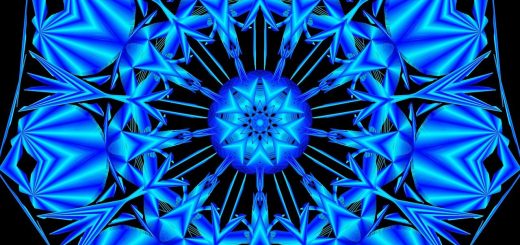Hindu Art: Iconography and Symbolism

Before diving in, please note: This post is for informational purposes only. If you’d like to know more about how we approach topics, feel free to check out our friendly Disclaimer Page.
Hey there, amazing readers! 🖐️ Just a quick note: yes, we know there are a lot of ads here. Trust us, we get it—it’s not the prettiest look, but they help us keep this blog alive and kicking. Those pesky little ads cover the costs of all the behind-the-scenes magic, from hosting and tech stuff to creating content we hope you’ll love.
We’re committed to delivering quality posts, and your support (even just sticking around despite the ads) means everything to us. So, bear with us, and thanks for helping us keep the good vibes rolling. Now, on to the fun stuff! 😉
TRANSLATE BUTTON AT THE END OF THE ARTICLE
A Quick Overview
Hindu art is a vibrant and intricate form of artistic expression that has been an integral part of Indian culture for centuries.
It encompasses a wide range of styles, techniques, and themes that are deeply rooted in Hindu mythology, spirituality, and philosophy.
Iconography and symbolism play a crucial role in Hindu art, helping to convey complex concepts and stories through visual representation.
From depictions of gods and goddesses to intricate details in nature, Hindu art is rich in symbolism that carries deep meaning and significance.
This article delves into the world of Hindu art, exploring its iconography, symbolism, evolution, and modern interpretations.
Introduction to Hindu Art
Hindu art has a long and rich history that dates back thousands of years.
It encompasses a diverse range of art forms, including sculpture, painting, architecture, and textiles.
Hindu art is deeply influenced by religious beliefs, mythology, and cultural traditions, making it a unique and complex form of artistic expression.
From the elaborate sculptures of temples to the intricate paintings found in homes and sacred spaces, Hindu art reflects the diverse and vibrant culture of India.
Understanding Iconography in Hindu Art
Iconography is a key aspect of Hindu art, as it involves the use of symbols and images to convey deeper meanings and concepts.
Each deity in Hindu mythology is associated with specific symbols, attributes, and poses that help identify them and their characteristics.
For example, the god Ganesha is often depicted with an elephant head, symbolizing wisdom and intelligence, while the goddess Lakshmi is portrayed with lotus flowers, symbolizing purity and prosperity.
These symbols help viewers identify and connect with the divine beings represented in Hindu art.
Symbolism in Hindu Art
Symbolism plays a significant role in Hindu art, with each symbol carrying layers of meaning and significance.
For example, the lotus flower is a common symbol in Hindu art, representing purity, beauty, and enlightenment.
The snake symbolizes rebirth and transformation, while the peacock symbolizes grace and beauty.
These symbols are often used in combination to create complex and layered representations that convey profound spiritual and philosophical concepts.
Gods and Goddesses in Hindu Art
Hindu art is replete with depictions of gods and goddesses, each with their unique attributes, symbols, and stories.
From the powerful goddess Durga, who symbolizes strength and protection, to the playful god Krishna, who embodies love and compassion, Hindu art showcases a diverse pantheon of divine beings.
Each deity is depicted in various forms and poses, reflecting their different aspects and qualities.
These depictions serve not only as objects of worship but also as sources of inspiration and guidance for devotees.
Rituals and Ceremonies in Hindu Art
Rituals and ceremonies are integral to Hindu art, as they form the basis of many artistic expressions.
From intricate rangoli designs created during festivals to elaborate temple rituals performed by priests, Hindu art is deeply intertwined with religious practices and traditions.
Artistic creations are often used in ceremonies to invoke blessings, offer prayers, and seek divine intervention.
These rituals not only enhance the aesthetic experience but also deepen the spiritual connection between the artist, the artwork, and the divine.
Depicting Nature in Hindu Art
Nature holds a special place in Hindu art, with artists drawing inspiration from the natural world to create intricate and detailed works of art.
From lush landscapes to vibrant flora and fauna, Hindu art celebrates the beauty and diversity of the natural world.
Animals such as elephants, peacocks, and snakes are commonly depicted in Hindu art, symbolizing various qualities and characteristics.
The intricate detailing and vibrant colors used to depict nature in Hindu art reflect the deep reverence and awe that Hindu culture holds for the natural world.
Influence of Hindu Philosophy on Art
Hindu philosophy has a profound influence on art, shaping its themes, symbols, and aesthetic principles.
Concepts such as dharma (duty), karma (action), and moksha (liberation) are central to Hindu thought and are reflected in artistic expressions.
The idea of cyclical time, represented by the concept of samsara (the cycle of birth, death, and rebirth), is often depicted in Hindu art through symbols such as the wheel of life.
Hindu art seeks to capture the essence of these philosophical ideas through visual representations that resonate with viewers on a spiritual and intellectual level.
Sacred Symbols in Hindu Art
Sacred symbols are prevalent in Hindu art, serving as powerful tools for conveying spiritual truths and teachings.
The Om symbol, for example, represents the primordial sound of creation and is considered the most sacred symbol in Hinduism.
The Swastika symbolizes auspiciousness and well-being, while the Bindu symbolizes the source of creation.
These symbols are often used in religious rituals, ceremonies, and artistic creations to invoke divine blessings and protection.
Sacred symbols in Hindu art serve as potent reminders of the eternal truths and values that underpin the Hindu faith.
Evolution of Hindu Art
Hindu art has evolved over the centuries, adapting to changing artistic styles, techniques, and cultural influences.
From the ancient cave paintings of Ajanta and Ellora to the intricate temple sculptures of Khajuraho, Hindu art has undergone numerous transformations while retaining its core themes and symbols.
The Mughal and Rajput influences brought new elements to Hindu art, resulting in a fusion of styles and techniques.
Modern interpretations of Hindu art continue to push boundaries and explore new avenues of expression, reflecting the ever-evolving nature of artistic creativity.
Regional Variations in Hindu Art
Hindu art exhibits regional variations across India, with each region showcasing unique styles, techniques, and themes.
The vibrant colors and intricate patterns of Tanjore paintings in South India contrast with the delicate brushwork and muted tones of Pahari miniatures in the North.
The architectural marvels of temples in South India differ from the grandiose palaces and forts of Rajasthan.
Each region brings its unique cultural traditions and artistic sensibilities to Hindu art, resulting in a diverse and eclectic tapestry of artistic expression.
Modern Interpretations of Hindu Iconography
In contemporary times, artists have reinterpreted Hindu iconography in innovative and creative ways, blending traditional symbols with modern techniques and aesthetics.
From digital art to installation pieces, contemporary artists are exploring new mediums and approaches to bring Hindu art into the modern era.
Themes of identity, gender, and social justice are being explored through the lens of Hindu mythology, challenging traditional narratives and interpretations.
Modern interpretations of Hindu iconography reflect the evolving nature of art and culture, seeking to engage with contemporary audiences in meaningful and thought-provoking ways.
Preservation and Conservation of Hindu Art
The preservation and conservation of Hindu art are essential to safeguarding India’s cultural heritage and artistic legacy.
Many ancient temples, sculptures, and artworks are at risk due to environmental factors, urbanization, and neglect.
Conservation efforts focus on restoring and protecting these priceless treasures for future generations to appreciate and enjoy.
Government agencies, cultural institutions, and nonprofit organizations collaborate to ensure the proper maintenance and preservation of Hindu art.
Public awareness campaigns and educational programs play a crucial role in raising awareness about the importance of preserving India’s rich artistic heritage for posterity.
Conclusion
Hindu art is a dynamic and multifaceted form of artistic expression that reflects the rich cultural heritage and spiritual traditions of India.
Iconography and symbolism are key elements of Hindu art, helping to convey complex ideas and stories through visual representations.
From depictions of gods and goddesses to intricate details in nature, Hindu art is steeped in symbolism and meaning.
As Hindu art continues to evolve and adapt to changing times, it remains a vital part of India’s artistic landscape, inspiring generations of artists and viewers alike.
Through preservation and conservation efforts, Hindu art will continue to thrive and enrich the cultural tapestry of India for years to come.

The Enlightenment Journey is a remarkable collection of writings authored by a distinguished group of experts in the fields of spirituality, new age, and esoteric knowledge.
This anthology features a diverse assembly of well-experienced authors who bring their profound insights and credible perspectives to the forefront.
Each contributor possesses a wealth of knowledge and wisdom, making them authorities in their respective domains.
Together, they offer readers a transformative journey into the realms of spiritual growth, self-discovery, and esoteric enlightenment.
The Enlightenment Journey is a testament to the collective expertise of these luminaries, providing readers with a rich tapestry of ideas and information to illuminate their spiritual path.
Our Diverse Expertise 🌟
While our primary focus is on spirituality and esotericism, we are equally passionate about exploring a wide range of other topics and niches 🌍📚. Our experienced team is dedicated to delivering high-quality, informative content across various subjects ✨.
To ensure we provide the most accurate and valuable insights, we collaborate with trusted experts in their respective domains 🧑🏫👩🏫. This allows us to offer well-rounded perspectives and knowledge to our readers.
Our blog originally focused on spirituality and metaphysics, but we’ve since expanded to cover a wide range of niches. Don’t worry—we continue to publish a lot of articles on spirituality! Frequently visit our blog to explore our diverse content and stay tuned for more insightful reads.





